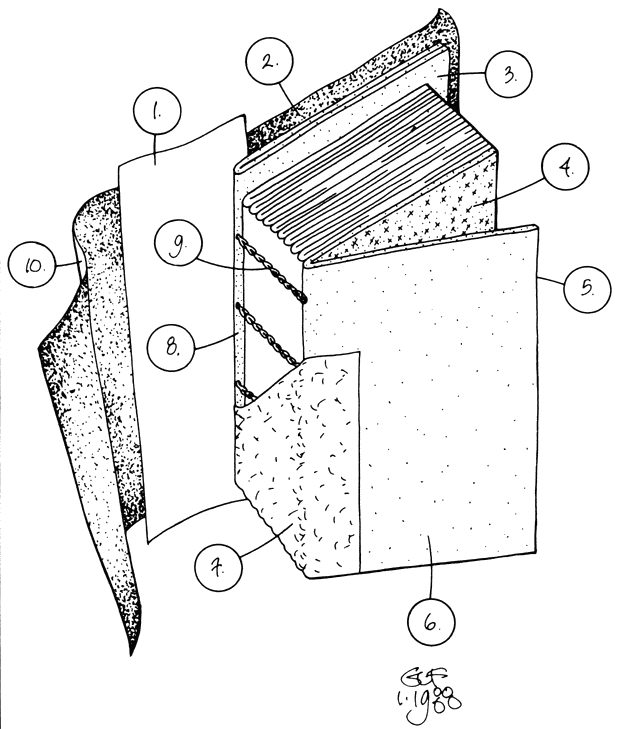

To the Editor:
There was an interesting question posed at the last LBS Conference (see Abbey of Dec. 1987). It concerned the possibility of a practical library binding based solely on early book structures. The basic characteristics that occurred to me were unsupported thread only sewing, a sewn cover to text attachment, flat back forwarding and a square-less finished book.

My suggestion is represented in the supplied drawing:
One further comment: The "stabsewn endsheet issue" seems a little confused at this point. At the LBS conference my suggestions related only to repairs and reinforcements of bindings. The sidesewn reinforcement for paperbacks came from Tony Cams and the stabbed endsheet repair for boarded books cane from John Dean. I have found both to be excellent, fully thought out methods.
It seems that the sparse station sidesewing method can be extended beyond paperback reinforcement into text consolidation in general book repair. I suspect that the method will also prove useful in rebinding of text paper too weak for sewing in any other manner, i.e. through fold or oversewing.
Gary Link FrostTo the Editor:
At the recent Guild of Bookworkers' Standards Seminar there was a wonderful demonstration of headbanding by Jenny Hille that prompted me to show a few people a quilters tool that I have started using for headbands. So many people showed interest in the tool that I thought I would give the tool more press. One of the Standards Seminar participants who is a first year student in the Alabama Book Arts Program, John Bertonaschi, agreed to draw the tool for me and I would then submit the information on obtaining the tool either wholesale or retail to you for publication in the newsletter.

I use the tool to push the needle through the spine (especially stiff spines) and find it avoids the need for needlenose pliers which I feel damage the needle and can then damage the following sections you sew down into.
The tool is available at House of Quilting, Rte. 3, Box 433, Fayetteville, NC 28306 (919/ 868-3842).
Jean Adkins invented and patented the tool.
Carol Sue Whitehouse